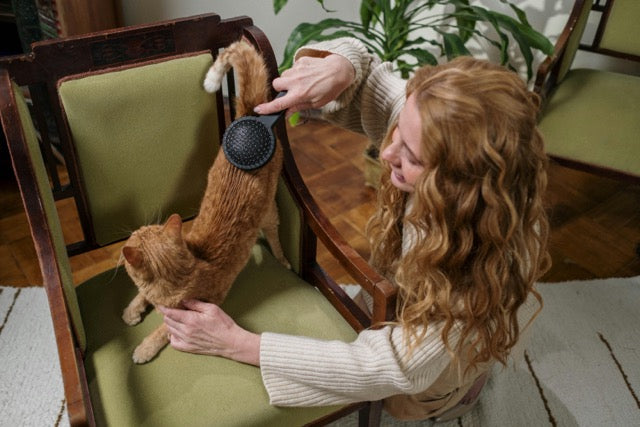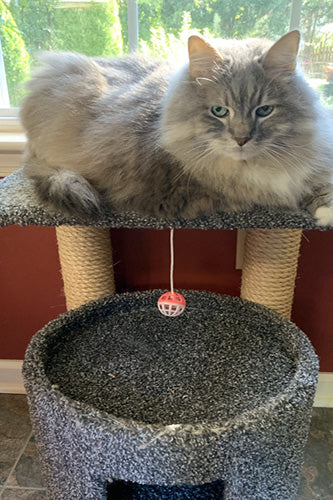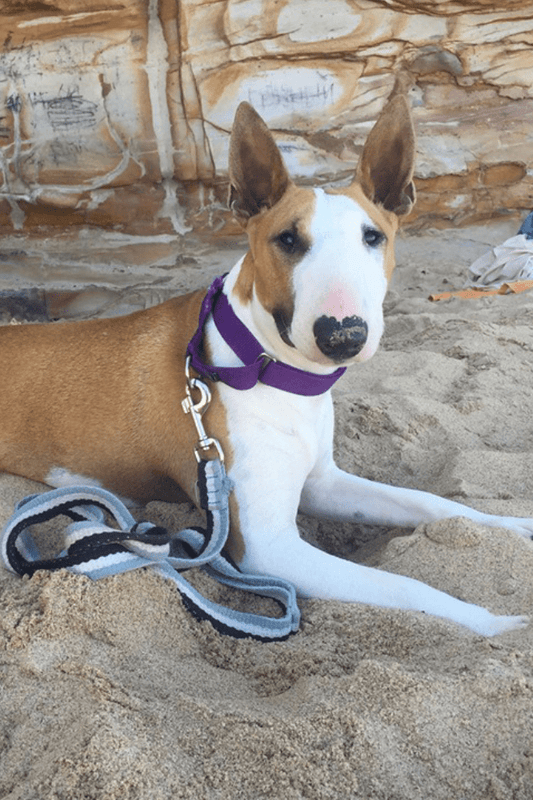A grooming session is the perfect bonding time for you and your feline friend, but it’s also great for their health and wellbeing. It removes loose fur, debris, and dirt and helps to shift dandruff and dead skin cells. It also prevents knots from turning into mats, which can become painful and result in skin sores.

Grooming helps you keep a close eye on your cat's overall health—check them for lumps, bumps, and sores, and keep an eye out for fleas who might be hitching a ride!
My Cat Is Short-Haired—Do I Still Need To Groom Them?
Ideally, yes, even short-haired cats benefit from regular brushing.
However, if you have a hairless breed, such as a Sphynx cat, you won’t need to brush them, but their skin will need extra care, particularly around their ears.

You can learn more about the different types of cat coats here.
What Brushes Should I Use On My Cat?
Plenty of brushes are out there, each designed to cater to different coat lengths and textures. Here are a few of your options:
Slicker Brushes
These have short metal bristles, perfect for gently teasing out knots, making coats shiny, and evenly spreading your cat’s skin oils through their coat.
Fine Toothed Combs
Loose hair and debris will be a thing of the past with a fine-toothed comb, leaving a super shiny coat. These are best for shorter-haired cats as they risk pulling on knots if your cat has longer hair.
Wide Toothed Combs
Perfect for gentle detangling, these are great on all types of fur.
Rakes
Rakes need to be used with care. They help remove loose undercoat, preventing tangles and mats. But be careful, as they can be uncomfortable for your cat if they already have a buildup of mats.
My Cat Hates Being Brushed. How Should I Groom Her?
Yep, sometimes it can feel like you’re taking your life in your hands, and we’ve all been caught out by a tummy rub of doom!
But there are some things you can do to help your cat feel comfortable when you’re grooming them.
- Use positive reinforcement, such as treats, to create a positive association with grooming
- Choose a quiet and calm environment to minimise stress and distractions
- Take breaks during grooming sessions
- Talk quietly to your cat to reassure them
- Make it fun and add some playtime into the session to destress
- Avoid areas you know they hate (yep, like their belly) until they’re used to being groomed, then slowly add these areas into your routine, building up the time and touch
- Be patient. Don’t expect them to tolerate long sessions to start with.
Cats are often pretty obvious about their opinion on being groomed, which means it can be a risky game for us as their beauty therapists. But there are signs that your cat is uncomfortable with being groomed that you might notice before they resort to claws.
- Tail flicking
- Twitching their skin, particularly along their back and side
- Swallowing and lip-licking
- Tense ears, or turning their ears backwards
- Quickly turning towards your hand or the brush
- Grooming themselves, sometimes frantically
- Grumbling or growling.
Should I Bath My Cat?
Generally, cats don’t need bathing; they manage their hygiene pretty well. But sometimes a pamper is necessary; when they get something unpleasant or unsafe in their fur, they have a skin condition, or perhaps because they are a hairless breed.

Tips For Bathing Your Cat
- Prevent slips by placing a grippy surface, such as a towel or bath mat, on the bottom of your bath or sink.
- Use lukewarm water and dont fully submerge your cat; gently pour the water over them, avoiding their eyes and nose.
- Use a cat-specific shampoo, so it's safe for them to lick
- Rinse them off well
- Dry them gently but quickly - most cats won't tolerate a hairdryer
- Reward them with treats after their bath. You could even smear some food on the side of the sink or bowl during the bath to keep them distracted
- Be willing to stop if they become too stressed.
What About Claws? How Do I Trim My Cat’s Claws?
If you start claw trimming when your cat is young, it’s not a chore, but if they’re not used to it, claw trimming can feel like you need to don full armour!
Overgrown nails can cause discomfort and even lead to injury, and can be particularly difficult for your cat if they also have mobility problems. (Plus…your furniture might take a beating!)
Always used pet-specific nail clippers, and it’s good to have some styptic powder to hand. This helps to stop bleeding if you cut the claw too short. You can get it from any good pet retailer, or a home alternative is cornflour.

Gently hold your cat's paw and press on the pad to extend the nails. Carefully trim the sharp tip of each nail, taking care not to cut into the quick, which is the darker bit that contains blood vessels and nerves.
My Cats Won’t Let Me Trim Their Claws. What Else Can I Try?
Start getting them used to having their claws cut by gently touching and holding their paw, rewarding them as you go until they are comfortable enough for the clippers.
But if it’s too stressful for you both, you could offer alternatives such as scratching pads, cat trees, or try the gentler claw option of a pet nail file.
How Can I Reduce My Cat’s Shedding?
So you’ve done all the grooming, and your cupboard is packed with every type of brush going, but your house is still covered in fur. What can you do to reduce the fluff?
Regular grooming will help to reduce the spread of fur around your home. Shedding is a natural process, and there’s nothing you can do to stop it completely, but healthy skin promotes a healthy coat, so offering a supplement that supports their skin health may reduce shedding.
The ingredients in Antinol® Plus promote a healthy skin barrier and encourage healthy hair follicles to grow. It may also increase the amount of time a hair is held within the skin, reducing shedding—for healthy fur on your cat, not your floor.
Give Antinol® a try now with our NEW Easy-Feed capsules for fuss-free feeding.










